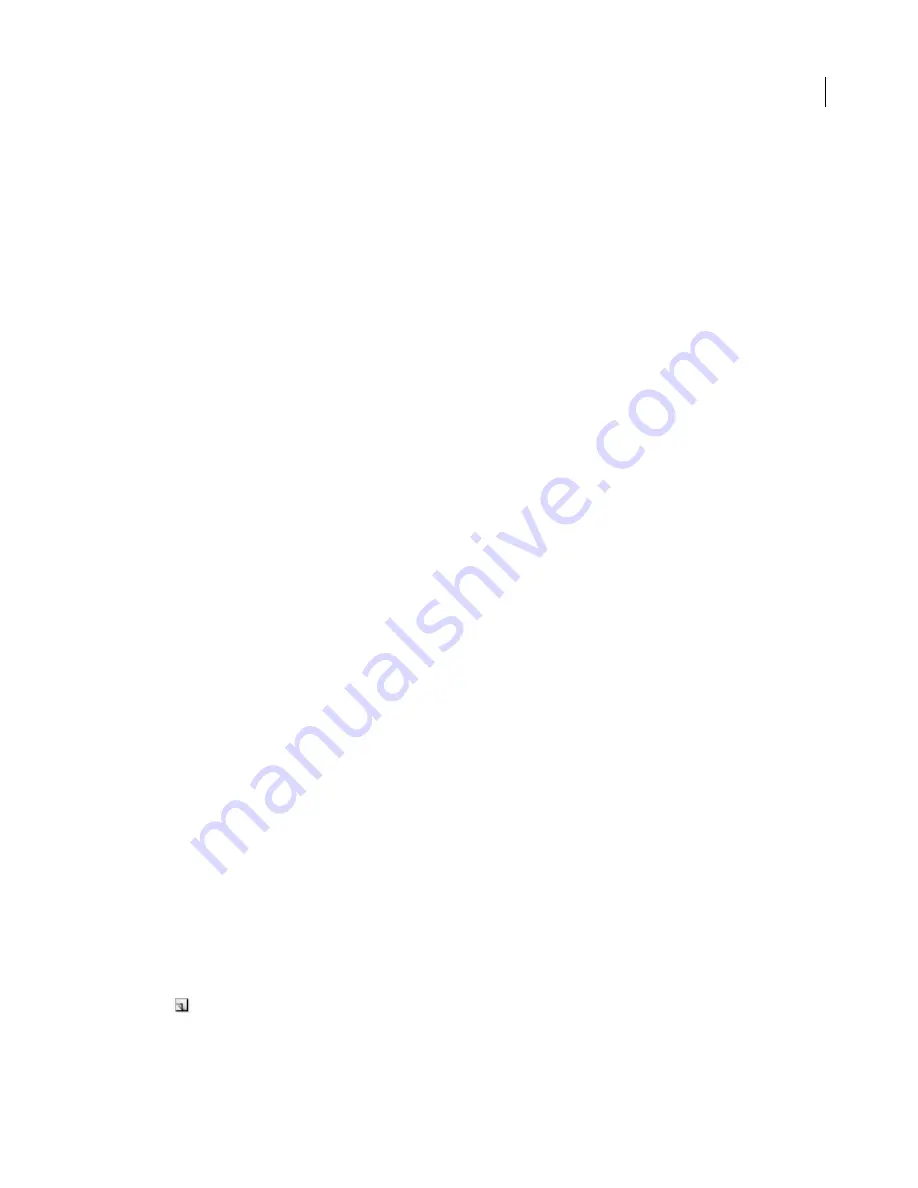
418
ADOBE PHOTOSHOP CS2
User Guide
Layer style options
Angle
Determines the lighting angle at which the effect is applied to the layer. In Photoshop, you can drag in the
document window to adjust the angle of a Drop Shadow, Inner Shadow, or Satin effect.
Anti-alias
Blends the edge pixels of a contour or gloss contour. This option is most useful on shadows with a small
size and complicated contour.
Blend Mode
Determines how the layer style blends with the underlying layers, which may or may not include the
active layer. For example, an inner shadow blends with the active layer because the effect is drawn on top of that layer,
but a drop shadow blends only with the layers beneath the active layer. In most cases, the default mode for each effect
produces the best results. See “List of blending modes” on page 487.
Choke
Shrinks the boundaries of the matte of an Inner Shadow or Inner Glow prior to blurring.
Color
Specifies the color of a shadow, glow, or highlight. You can click the color box and choose a color.
Contour
With solid-color glows, Contour allows you to create rings of transparency. With gradient-filled glows,
Contour allows you to create variations in the repetition of the gradient color and opacity. In beveling and
embossing, Contour allows you to sculpt the ridges, valleys, and bumps that are shaded in the embossing process.
With shadows, Contour allows you to specify the fade. For more information, see “Modifying layer effects with
contours” on page 419.
Distance
Specifies the offset distance for a shadow or satin effect. In Photoshop, you can drag in the document
window to adjust the offset distance.
Depth
Specifies the depth of a bevel. It also specifies the depth of a pattern.
Global Angle
Turns on global lighting for the effect. Global lighting applies the same angle to all effects for which
the Global Angle option is selected, giving the appearance of a single light source shining on the image. Deselect
Global Angle to assign a local angle to Drop Shadow, Inner Shadow, and Bevel effects.
Gloss Contour
Creates a glossy, metallic appearance. Gloss Contour is applied after shading a bevel or emboss.
Gradient
Specifies the gradient of a layer effect. In Photoshop, click the gradient to display the Gradient Editor or
click the inverted arrow and choose a gradient from the pop-up palette. In Photoshop, you can edit a gradient or
create a new gradient using the Gradient Editor. In ImageReady, click the inverted arrow next to the gradient sample
and select a gradient from the list, or choose a gradient type from the pop-up list. You can edit the color or opacity
in the Gradient Overlay panel the same way you edit them in the Gradient Editor. For some effects, you can specify
additional gradient options. Reverse flips the orientation of the gradient, Align With Layer uses the bounding box of
the layer to calculate the gradient fill, and Scale scales the application of the gradient. You can also move the center
of the gradient by clicking and dragging in the image window. Style specifies the shape of the gradient.
Highlight or Shadow Mode
Specifies the blending mode of a bevel or emboss highlight or shadow.
Jitter
Varies the application of a gradient’s color and opacity.
Layer Knocks Out Drop Shadow
Controls the drop shadow’s visibility in a semitransparent layer.
Noise
Specifies the number of random elements in the opacity of a glow or shadow. Enter a value or drag the slider.
Opacity
Sets the opacity of the layer effect. Enter a value or drag the slider.
Pattern
Specifies the pattern of a layer effect. In ImageReady, click the inverted arrow next to the pattern sample and
choose a pattern from the list. In Photoshop, click the pop-up palette and choose a pattern. Click the New preset
button
to create a new preset pattern based on the current settings. Click Snap To Origin to make the origin of
the pattern the same as the origin of the document (when Link With Layer is selected), or to place the origin at the
upper left corner of the layer (if Link With Layer is deselected). Select Link With Layer if you want the pattern to






























